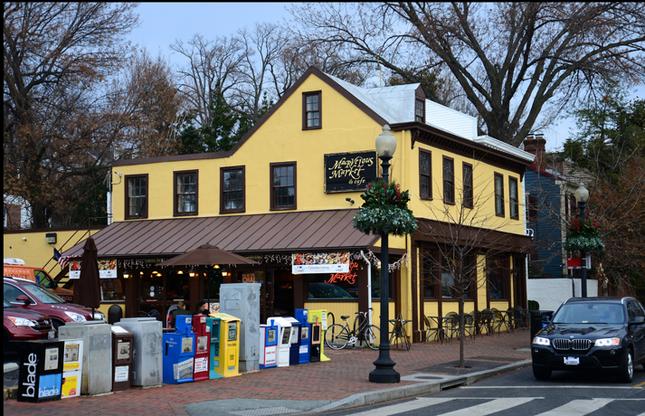Roadside Development: A Different Kind of Commercial Real Estate
By • December 17, 2014 0 1236

One of the biggest names in Washington, D.C., real estate, Roadside Development was established 17 years ago by Smithy Braedon alums Richard Lake and Armond Spikell, who recruited longtime client Todd Weiss to join them. All three are well acquainted with the D.C. metro area. When he was growing up, Lake worked at the Zebra Room, a Wisconsin Avenue business owned by his family.
The name Roadside Development was inspired by the company’s first projects: CVS locations in the D.C. suburbs. After doing 17 stores in and around D.C., Armond said, “We build things along the road. Why don’t we call ourselves Roadside Development?” Lake says he and his partners have thought about changing it, “because who wants to live in an apartment built by Roadside Development…[but] it has really stuck.”
According to Lake, there are a lot of developers who build housing well, and others who build retail well, but Roadside’s mission is to “marry the two.” He offers Roadside’s City Market at O in Shaw and its Cityline in Tenleytown as examples and calls them his favorites, saying that the projects “captured what was necessary for those neighborhoods.”
He talks glowingly about City Market. “It was an early form of grocery store in the 1800s when it was built. It made sense to incorporate the market and make it the centerpiece of the entire development.” But, Lake says, Roadside wanted to “design something that sets that building off and apart from more modern construction.” The company looked at different shapes, materials, colors and windows and came up with a design that pays homage to the original market while maintaining modernity.
Lake also talks passionately about the need for affordable housing in the District, calling such housing “imperative.” He adds, “We all fail if we don’t provide safe and quality housing for everyone.” In that vein, during the City Market construction process, Roadside promised area seniors 78 affordable units, eventually constructing 90 that rent at below-market rates.
Lake is looking forward to future Roadside projects, such as renovating Frager’s Hardware, a Capitol Hill institution that burned down in 2013. He calls the project a “smaller version of [City Market at] O Street” and says that Roadside is seeking to add vitality to the block and bring people in to live at the site.
In Georgetown, Roadside has the old Neam’s Market site under contract. Lake says: “We don’t own the property. We aren’t talking about plans yet because we haven’t formulated them completely. It’s a really cool corner with a lot of history. The corner is a Washington institution. It’s a small piece of property, but we want to do something neat there if we are able to.”
Lake calls the pipeline the “single most complicated part of the business,” explaining: “We just finished building $400 million worth of stuff, but you have to make sure there’s something else in the project pipeline for the future when you are in the final stages of other projects.” He adds, “There are so many variables in the types of development we do, always something that can trip us up, whether it’s zoning, the market or changes in attitudes.”
The company “has been pretty fortunate to find projects to keep us active.” Lake says he worries sometimes about overdevelopment and “too many of the same thing being built,” but says Roadside works as hard as it can to differentiate its product by bringing in retail, office space and, when feasible, housing.
So far, that mix and Roadside’s vision have brought great value to the District while restoring and enhancing its architectural character.

